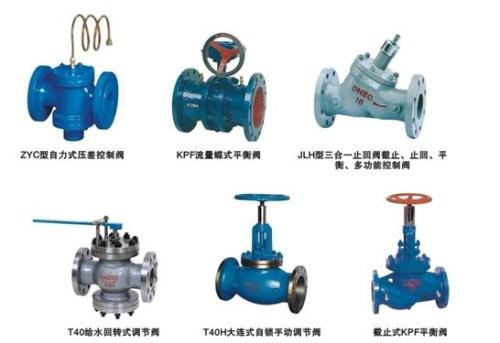 According to the different functions of the opening and closing valve, there are many methods for classifying the valves. Here are the following.
According to the different functions of the opening and closing valve, there are many methods for classifying the valves. Here are the following. 1. According to the role and use of classification (1) cut-off valve: cut-off valve, also known as closed-circuit valve, its role is to connect or cut off the media in the pipeline. Cut-off valves include gate valves, globe valves, plug valves, ball valves, butterfly valves, and diaphragms.
(2) Check valve: Check valve, also known as check valve or check valve, its role is to prevent the media back in the pipeline. The bottom valve of the pump is also a check valve.
(3) Safety valve: The role of the safety valve is to prevent the medium pressure in the pipe or device from exceeding the specified value, so as to achieve the purpose of safety protection.
(4) Regulating valves: Regulating valves include regulating valves, throttle valves and pressure reducing valves. Their role is to regulate the pressure, flow and other parameters of the medium.
(5) Diverter Valves: Diverter Valves include a variety of distribution valves, traps, etc. The function is to distribute, separate or mix the media in the piping.
2. Classified by nominal pressure (1) Vacuum valve: refers to a valve whose working pressure is lower than standard atmospheric pressure.
(2) Low pressure valve: refers to the valve with nominal pressure PN ≤ 1.6Mpa.
(3) Medium pressure valve: refers to the valve with nominal pressure PN of 2.5, 4.0, and 6.4Mpa.
(4) High pressure valve: refers to the valve whose working pressure PN is 10~80Mpa.
(5) Ultra-high pressure valve: It refers to the valve with nominal pressure PN≥100Mpa.
3. According to the working temperature classification (1) ultra-low temperature valve: for the media working temperature t <-100 °C valve.
(2) Cryogenic valve: Valve used for medium operating temperature -100°C≤t≤-40°C.
(3) Normal temperature valve: It is used for valves with medium working temperature -40°C≤t≤120°C.
(4) Medium Temperature Valve: Used for Medium Operating Temperature 120°C
(5) High-temperature valve: Valve used for medium working temperature t>450°C.
3. Classification according to the connection method (1) Threaded valve: The valve body has internal or external threads and is threadedly connected to the pipe.
(2) Flange connection valve: The valve body has a flange and is connected with the pipe flange.
(3) Welding connection valve: The valve body has a welding groove and is welded to the pipe.
(4) Clamp connection valve: The valve body has a clamp and is connected to the pipe clamp.
(5) Sleeve connection valve: It is connected with the pipe sleeve.
(6) Coupling valve: The connection form that directly connects the valve and the two pipes together by bolts.
Engine Stand,Motor Stand ,Engine Cradle ,Engine Run Stand
Lifting Jack Co., Ltd. , http://www.nbliftingjack.com